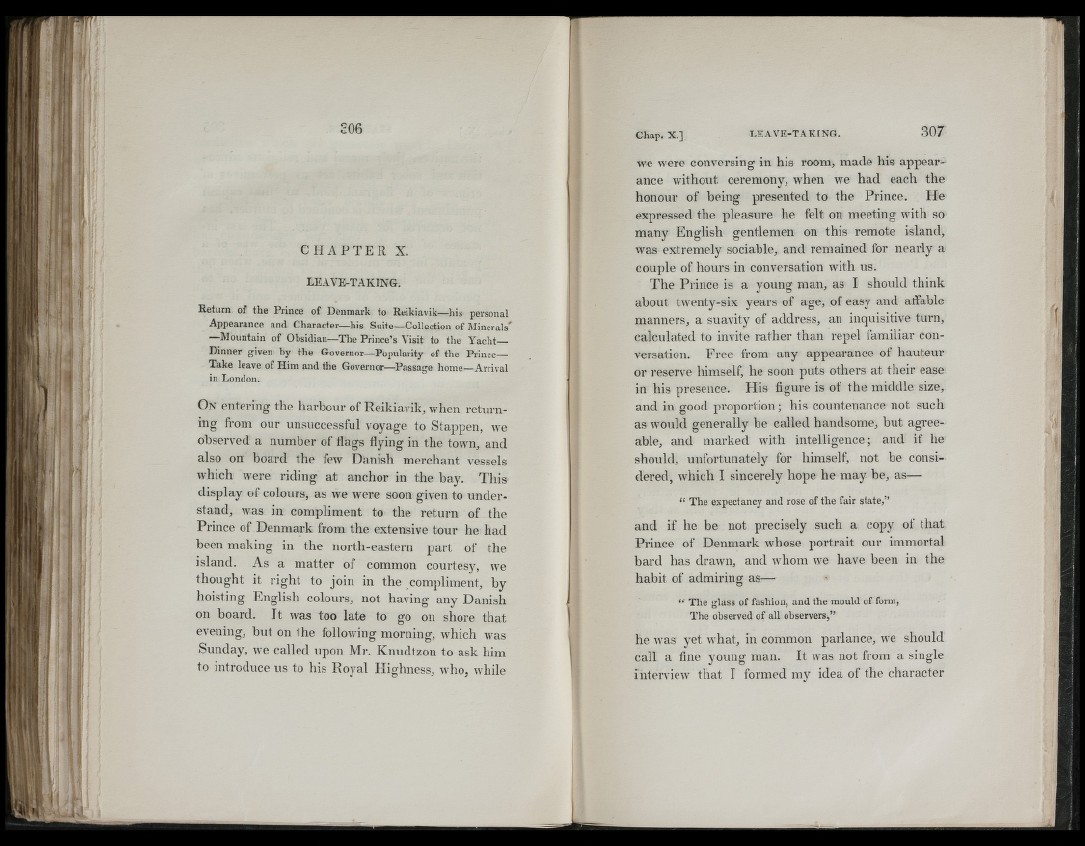
i 1
'Hi )
■i
■1 I
I'
C H A P T E R X.
L E A V E -T A K IN G .
Return of the Prince of Denmark to Reikiavik—his personal
Appearance and Character— his Suite—Collection o f Minerals'
— Mountain of Obsidian—The Prince’s Visit to tlie Y a ch t—
Dinner given by the Governor—Popularity of the Prince—
Take leave of Him and the Governor—Passage home—Arrival
in London.
O n entering the harbour of Reikiavik, when returning
from our unsuccessful voyage, to Stappen, we
observed a number of flags flying in the town, and
also on board the few Danish merchant vessels
which were riding at anchor in the bay. This
display of colours, as we were soon given to under-
stand, was in compliment to the return of the
Prince of Denmark from the extensive tour he had
been making in the north-eastern part of the
island. As a matter of common courtesy, we
thought it right to join in the compliment, by
hoisting English colours, not having any Danish
on board. It was too late to go on shore that
evening, but on the following morning, which was
Sunday, we called upon Mr. Knudtzon to ask him
to introduce us to his Royal Highness, who, while
we were conversing in his room, made his appearance
without ceremony, when we had each the
honour of being presented to the Prince. He
expressed the pleasure he felt on meeting with so
many English gentlemen on this remote island,
was extremely sociable, and remained for nearly a
couple of hours in conversation with us.
The Prince is a young man, as I should think
about twenty-six years of age, of easy and alfable
manners, a suavity of address, an inquisitive turn,
calculated to invite rather than repel familiar conversation.
Free from any appearance of hauteur
or reserve himself, he soon puts others at their ease
in his presence. His figure is of the middle size,
and in good proportion; his countenance not such
as would generally be called handsome, but agreeable,
and marked with intelligence; and if he
should, unfortunately for himself, not be considered,
which I sincerely hope he may be, as—
“ The expectancy and rose of the fair state,”
and if he be not precisely such a copy of that
Prince of Denmark whose portrait our immortal
bard has draivn, and whom we have been in the
habit of admiring as—
“ The g la ss of fashion, and the mould of form,
The observed o f all observers,”
he was yet what, in common parlance, we should
call a fine young man. It was not from a single
interview that I formed my idea of the character
i d '